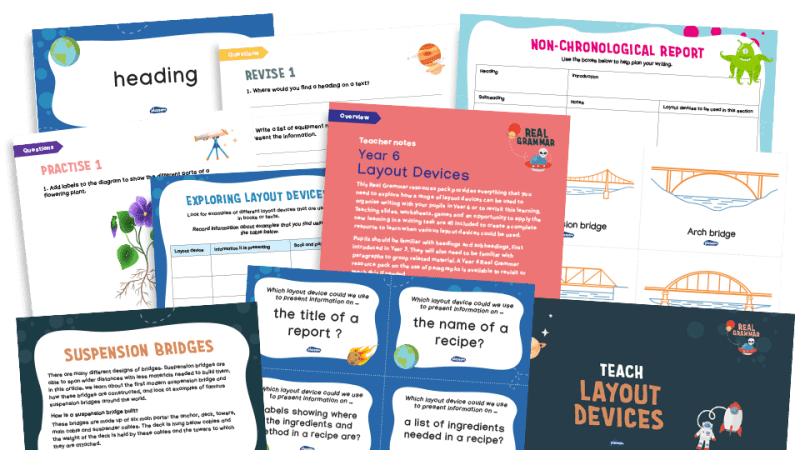Teach Your Students How To Speed Read

Fast, efficient reading skills can give any student an advantage, says Alison Davies – and these practical activities will help develop them…

- by Alison Davies
- Creative practitioner and writer

Whatever age you are, there comes a time when the pressure’s on.
There aren’t enough hours in the day, and your brain is on a go-slow. You’re presented with swathes of documentation that you need to absorb fast, but the thought of reading through every minute detail is enough to give you brain freeze.
Imagine, then, what it’s like for students, who are constantly battling a stream of information and regularly have to swot for exams. It can be a terrifying prospect, with questions like ‘Where do I begin?’ and ‘How am I going to remember the important stuff?’ sending them deeper into panic mode – but happily, there is an answer.
You can give your young people a head start by introducing them to the art of speed reading – all it takes is practice, patience and a creative approach. With a few carefully selected exercises, you can equip them with skills that will not only help them navigate the curriculum, but aid them throughout the rest of their learning lives.
How we read
To begin with, we first need to understand how the mind works during the reading process. When we read, our right eye latches on to a couple of letters towards the end of each word, while our left eye picks up the first few letters. The brain, being the super computer that it is, kicks in at this point and joins the dots. It quickly considers the context of what you’re reading and makes a connection between the letters, while at the same time recognising the shapes of words and decoding letter sequences.
To speed read, we need to learn how to make these connections between letters that form words more quickly. We also need do the same between chunks of text, so that we can become faster at recognising word shapes and making sense of an entire document.
Be prepared
It pays to prepare for the reading process by thinking of a series of questions beforehand – this helps to focus the brain and make it easier to pick out the relevant information.
Try this as a starter exercise to get students ‘into the zone’:
• Give out the headline from a newspaper report. Ask students to consider what they’d like to know about the story, just from reading the title. Get them to imagine that they’re roving reporters, and ask them to list five key questions that they’d ask.
• Then circulate the full article and give them a set time in which to read it. Their goal is to answer the questions they devised earlier and gain an understanding of what the piece is about. Find out how many students were able to answer all of their questions within the time limit, and whether they could identify what the article was about.
• Now encourage them to imagine that they’re news reporters piecing together what happened. What questions would they need to ask themselves in order to write an engaging piece? ‘Who?’, ‘What?’, ‘Why?’, ‘When?’, ‘Where?’ and ‘How?’ are the words that will make up their toolkit. Armed with this list, try the exercise again with a different article and reduce the reading time. This time, make it a quest to find the ‘heart’ of the news story as quickly as possible.
Once the students are focused on gathering information and have been equipped with the right questions, they’ll be ready to move on to some speed reading techniques.
From A to B
One of the best ways of reading quickly is to take note of the first and last line of a paragraph and attempt to work out what is said in between. Often, the most important information will be highlighted at the beginning of each section and then summarised at the end. To help students make these connections swiftly and easily try this exercise:
• Ask them to think of a memory that makes them smile, and get them to present this in the form of a story.
• Distribute pieces of paper and instruct them to draw three boxes for the beginning, middle and end of their tale. Get them to write a few sentences in the first box to set the scene and in the last box to bring the story to a close, but make sure they leave the middle box blank.
• Next, they must swap with a partner and read the information they receive. Their job now to describe what happens in the middle of their partner’s story. They should imagine that they’re detectives piecing together the stages of their partner’s narrative to make sense of what really happened. Set a time limit and encourage them to work quickly in making the narrative connections.
• Finish by asking them to reveal their stories and allowing their partners to explain what actually transpired between the ‘beginning’ and ‘end’ boxes.
Top tip – You can also practise this exercise with existing comic books and strips. Take an interesting story sequence and block out the middle pictures; then get the students to try and quickly uncover what happened in between
Key words
Being able to pick out key words is important when reading at speed – this will help you understand the content of a piece of writing. It takes practice to recognise and select the right words for the job, however, so to assist with this, set your students the following creative challenge:
• Select several short fairy tales – go for popular stories with a simple plot • Explain that you’re going to give them just a minute to read the tale, after which they must write down what they think are the key words • Then ask them to take turns reading aloud the words they’ve selected; the rest of the group must try to guess the tale. If they’ve picked the right words, the story should be obvious • To finish, talk about what makes a ‘key’ word; encourage the students to look for words and phrases that are repeated, or interesting and unusual words that stand out.
Four top speed reading tips
1. Don’t re-read Tempting as it is to go back over text to double-check the meaning, you should encourage students to get the gist of a text by scanning the first sentence of each paragraph. Ask them to skim through a document and write a couple of sentences to sum up what it’s about. Then give them the opportunity to read it properly and see if they missed any key elements.
2. Don’t sub vocalise When we hear the words we’re reading in our mind it slows us down – we can’t move on to the next word until we’ve finished hearing it. A fun way around this is to encourage students to hum a tune, whilst speed reading. This will get them out of the habit of hearing the words in their head.
3. Practice makes perfect As with any skill, the more experience you have the more it becomes second nature. Encourage students to take part in mini speed reading sessions for a minute at the end of each class. Give them a set text and get them to time each other – this way they’ll see how much they’re improving on a daily basis.
4. Relax We absorb more information when we’re relaxed and our brain waves have slowed down. The word ‘speed’ suggests we need to think quickly, but it’s actually more about picking out key elements and skimming over the rest. Deep breathing before and during speed reading sessions will help calm the mind and keep the brain alert.
Alison Davies is an author of several fiction and non-fiction books, a professional storyteller and creative practitioner, running workshops at universities throughout the UK and delivering sessions on creative communication and memory building techniques; for more information, visit alisonlrdavies.blogspot.co.uk










